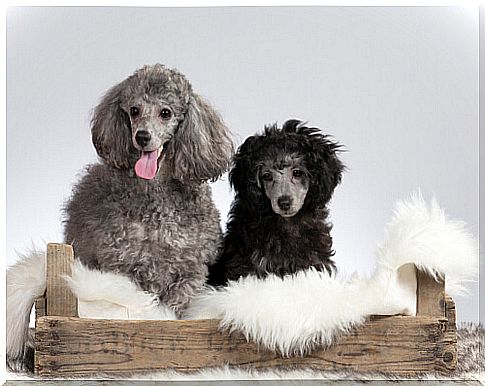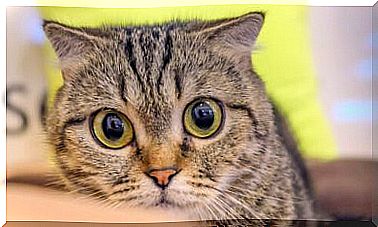The Color Of The Dog’s Hair, Indicative Of Diseases

The color of the dog’s coat, as well as its shine and texture, can tell a lot about its health. By observing the coat of your pet, you can have indications of the diet and care it receives, as well as detect possible symptoms of imbalances in its body.
In practice, the color of the dog’s hair can also indicate a predisposition to certain diseases. To learn more about these topics, here are some guidelines to follow.
The color of the labrador retriever and its health
To begin with, we want to mention a study conducted in the UK and published in the journal Canine Genetics and Epidemiology. It reflects a meticulous analysis of the veterinary history of more than 30,000 Labrador Retrievers residing in the UK.

As a consequence, it has been confirmed that the most frequent diseases in this canine breed are:
- Ear infections.
- Pyotraumatic dermatitis.
- Obesity.
- Degenerative joint diseases.
In other words, experts point out that there is a relationship between the color of the dog’s hair and the incidence of the aforementioned diseases. In addition, sex could also influence the predisposition to certain health problems.
The brown lab and its particularly fragile health
Brown or chocolate-colored Labradors are often highly prized for the beauty of their fur. But, according to the aforementioned research, their life expectancy can be up to 10% less than that of yellow or black Labradors.

In addition, a higher incidence of common diseases in the breed is observed in brown specimens. Ear infections, for example, have a prevalence rate of 12.8% in black Labradors, 17% in yellow Labradors, and 23.4% in brown Labradors.
On the other hand, pyotraumatic dermatitis registers a 4% incidence in chocolate-colored Labradors. The prevalence of the same disease is 1.6% in yellow dogs, and 1.1% in black dogs.
How do you explain the relationship between the color of the dog’s hair and the predisposition of certain diseases?
According to the researchers who participated in the aforementioned study, the relationship between the dog’s hair color and its health is due to genetic factors. In the case of the Labrador Retriever, the gene that determines the color brown or chocolate is recessive in this breed.
For a chocolate-colored Labrador to be born, both parents must be carriers of this gene. For this reason, it is common for breeders to practice inbreeding or between dogs with very similar genetic structures.
Consequently, brown Labradors tend to have a low genetic variety and high inbreeding. This is reflected in a greater genetic predisposition to the typical pathologies of the breed and in a shorter longevity.

The risks of low genetic variety in dogs and inbreeding crosses
The standardization of dog breeds, which includes the color of the dog’s hair, has only been possible thanks to the genetic selection of the parents. The main problem is that, in an effort to highlight aesthetic traits or instinctive behaviors, numerous consanguineous and even inbred crosses have been practiced.
As a result, the vast majority of dog breeds show a high genetic predisposition to develop certain hereditary diseases. In addition, inbred crosses tend to generate specimens with fertility problems, a weaker immune system and a reduced life expectancy.
As we have seen in the case of the brown labrador retriever, this problem is even more alarming when we talk about characteristics associated with recessive genes. Basically because, due to the rarity or low prevalence of these traits, crosses are usually made between related or genetically very similar individuals.
On the other hand, mongrels or dogs without a defined breed tend to have a greater longevity and a low prevalence of hereditary diseases. Among other things because they have a high genetic variety, since they were not subjected to selective crosses between genetically similar individuals.
In this way, the aforementioned research points again towards the risks of inadvertent crosses, with the aim of obtaining certain characteristics in dogs.
If the color of the dog’s hair is an indication of a more fragile health and a lower longevity, the most responsible thing would be not to encourage or facilitate the reproduction of such dogs only for profit.









